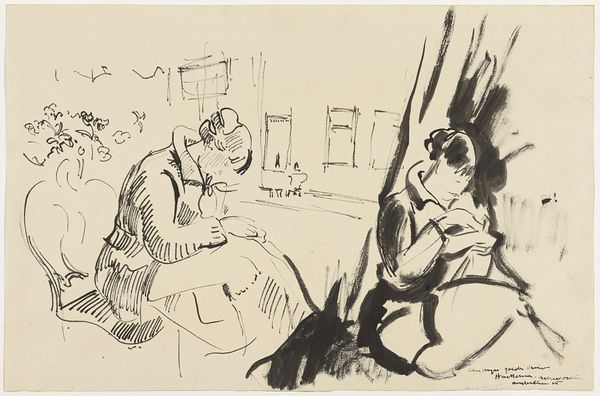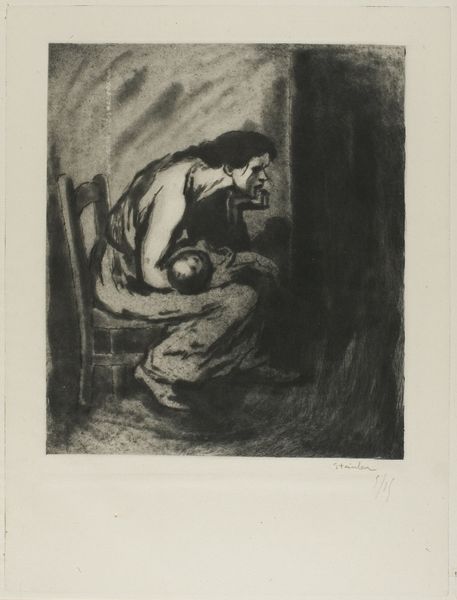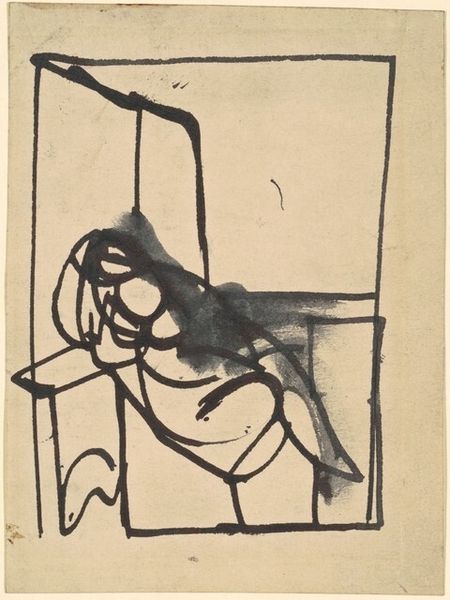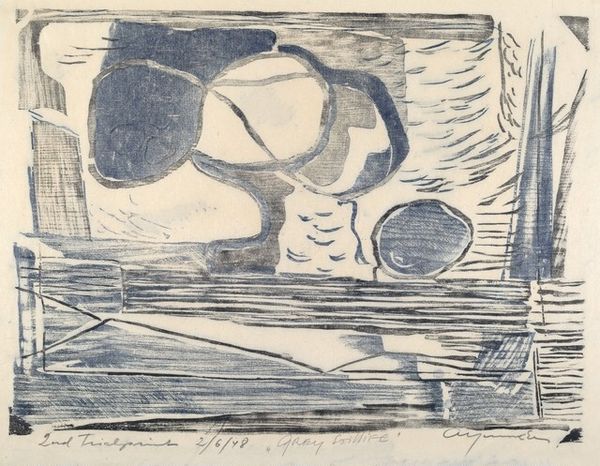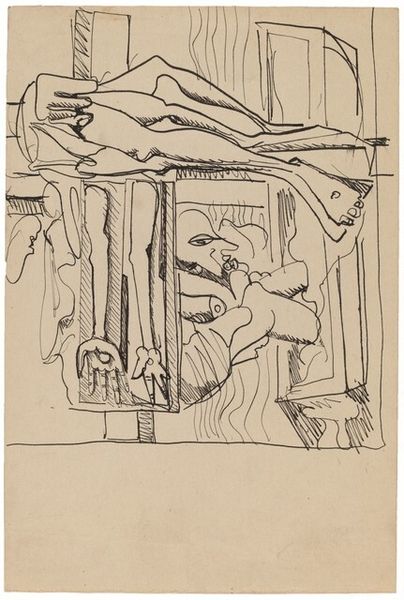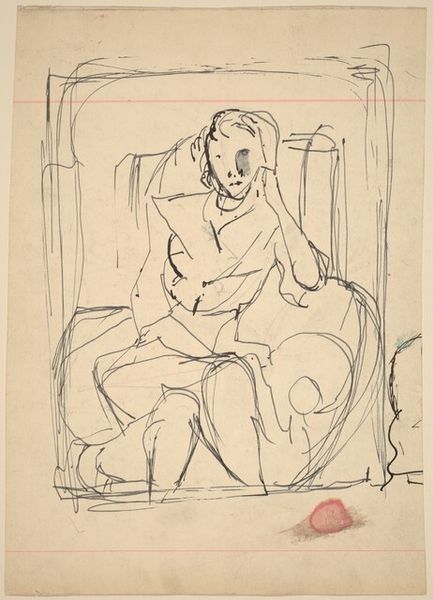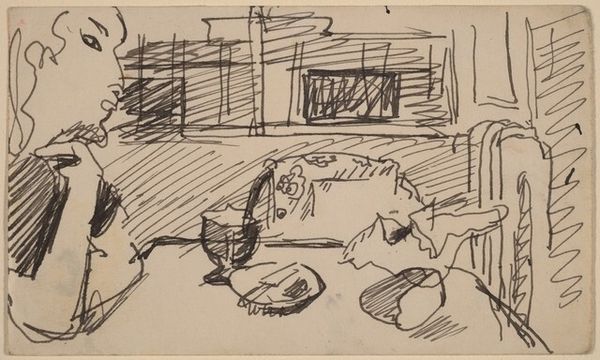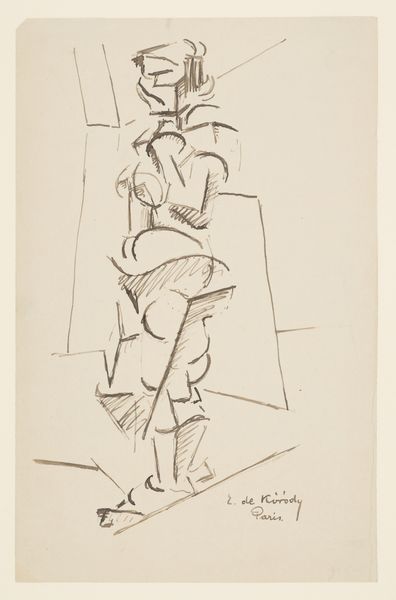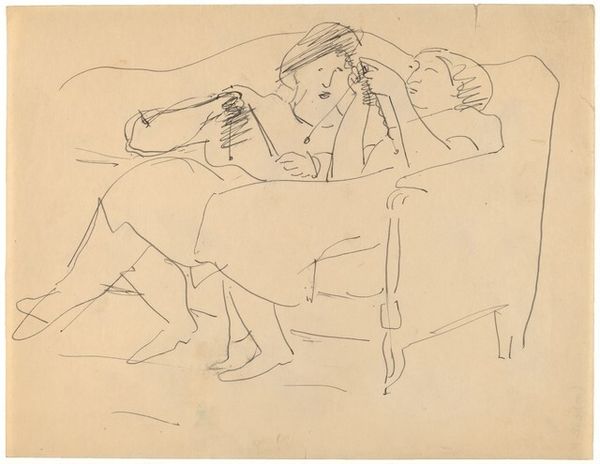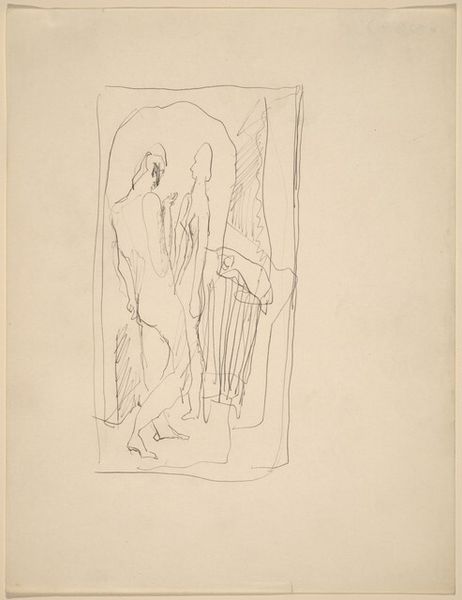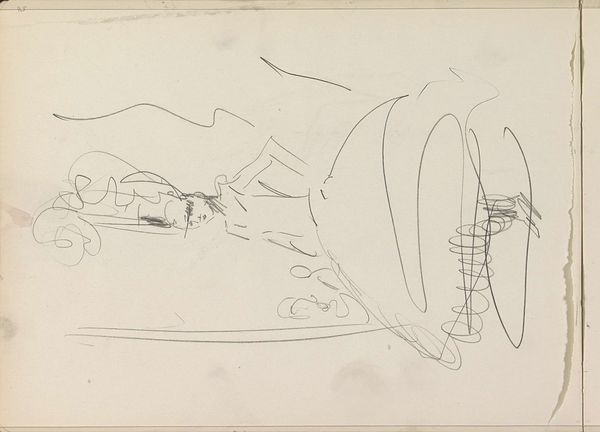
drawing, ink
#
abstract-expressionism
#
drawing
#
ink drawing
#
figuration
#
ink
#
abstraction
Dimensions: sheet: 22.6 x 25.5 cm (8 7/8 x 10 1/16 in.)
Copyright: National Gallery of Art: CC0 1.0
Editor: This is Franz Kline's "Figure Study" from 1946, rendered in ink. The thick, black lines give it a very raw and almost uneasy feeling. What do you see in this piece? Curator: It's interesting to consider this piece from a materialist perspective. The rapid, bold strokes of ink weren't just about depicting a figure; it was about the *act* of depicting. Ink as a readily available, inexpensive medium in the 1940s challenges high art's traditional materials such as oil and marble. Editor: So, the very *use* of ink, is a conscious decision by the artist, not simply the output. How does it impact the way we understand the image? Curator: Precisely. It prompts us to consider Kline's working conditions, the economic realities of postwar art production. The drawing itself isn't necessarily a refined study but might have been a vehicle for him to explore forms quickly. The paper itself, its quality and availability, would've determined the scale and the nature of these sketches, too. What was cheap and on hand. Editor: That makes a lot of sense. Viewing the materials—the ink and paper—as integral to understanding the artwork pushes against traditional connoisseurship, right? Curator: Absolutely! This shift encourages a critical evaluation of art as not solely born from 'genius' but the social and economic conditions framing the artwork. This blurs those hierarchical boundaries, focusing on production. Editor: I've learned a great deal looking through this different lens. Considering the materials used sheds entirely new light on "Figure Study." Curator: Indeed! It challenges assumptions of high and low, elevating the humble ink drawing to a space for complex social inquiry.
Comments
No comments
Be the first to comment and join the conversation on the ultimate creative platform.
